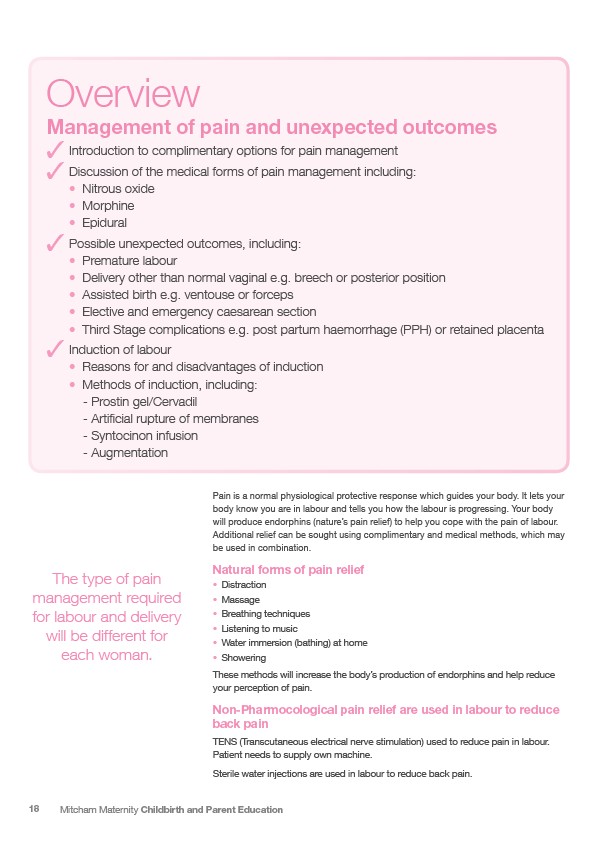
Overview
Management of pain and unexpected outcomes
Introduction to complimentary options for pain management
Discussion of the medical forms of pain management including:
• Nitrous oxide
• Morphine
• Epidural
Possible unexpected outcomes, including:
• Premature labour
• Delivery other than normal vaginal e.g. breech or posterior position
• Assisted birth e.g. ventouse or forceps
• Elective and emergency caesarean section
• Third Stage complications e.g. post partum haemorrhage (PPH) or retained placenta
Induction of labour
• Reasons for and disadvantages of induction
• Methods of induction, including:
- Prostin gel/Cervadil
- Artificial rupture of membranes
- Syntocinon infusion
- Augmentation
Pain is a normal physiological protective response which guides your body. It lets your
body know you are in labour and tells you how the labour is progressing. Your body
will produce endorphins (nature’s pain relief) to help you cope with the pain of labour.
Additional relief can be sought using complimentary and medical methods, which may
be used in combination.
Natural forms of pain relief
• Distraction
• Massage
• Breathing techniques
• Listening to music
• Water immersion (bathing) at home
• Showering
These methods will increase the body’s production of endorphins and help reduce
your perception of pain.
Non-Pharmocological pain relief are used in labour to reduce
back pain
TENS (Transcutaneous electrical nerve stimulation) used to reduce pain in labour.
Patient needs to supply own machine.
Sterile water injections are used in labour to reduce back pain.
The type of pain
management required
for labour and delivery
will be different for
each woman.
18 Mitcham Maternity Childbirth and Parent Education